There have been rumours running around High-Fidelity enthusiasts about the Theorem 720 DAC from Cypher Labs for some time now, so we have been itching to test it out! When we finally got our hands on it, we weren?t disappointed with this American DAC.
The American manufacturer Cypher Labs has a broad range of amplifiers on offer for headphones. There is The Prautes (a sedentary model that uses a tube amplification), two portable models (the AlgoRythm Piccolo and the AlgoRythm Duo), a DAC with amplifier for headphones (the AlgoRhythm Piccolo), and the AlgoRythm Solo-R and the AlgoRythm Solo-dB. The former is an Apple Digital Transport (can recover of digital audio data without decoding) and the latter boasts an integrated DAC and can be used with an Apple computer. Last, but certainly not least, there is the Theorem 720 DAC, which can be connected to a computer or smartphone, and possesses an amplifier for headphones and line outputs.
We invite you to discover the Theorem 720 DAC by having a look at our benchmark.
About the Cypher Labs Theorem 720 DAC
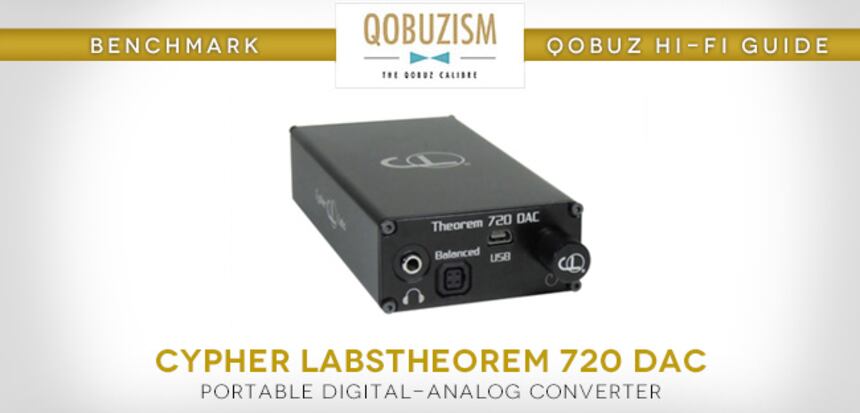
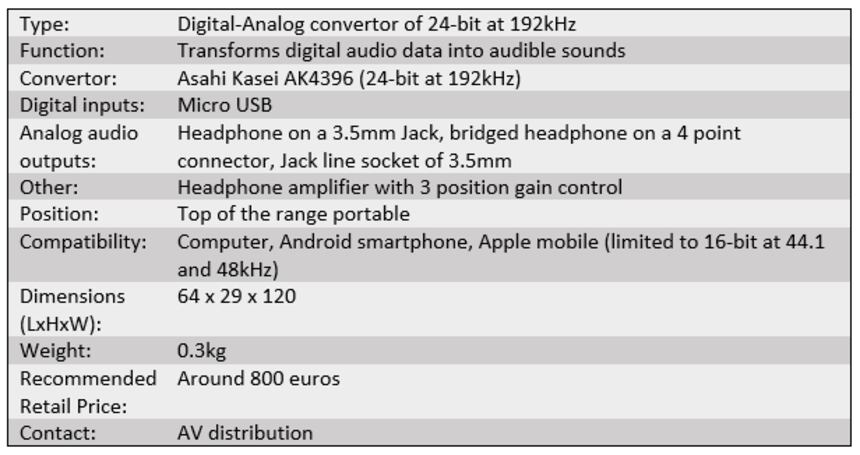
Presentation
Although it doesn?t affect its fantastic sound quality, you can?t deny that the Theorem 720 DAC is far from beautiful.
Its appearance is functional, exuding seriousness and solidity; a characteristic that is common amongst American manufacturers. The engraved text is not exactly subtle!
The back face encloses: a headphone socket of a standard 3.5mm Jack, a connector with four pins, enabling you to connect a (balanced) symmetric headphone, a mini USB socket to attach to a computer or smartphone, a volume button, and an on-off switch.
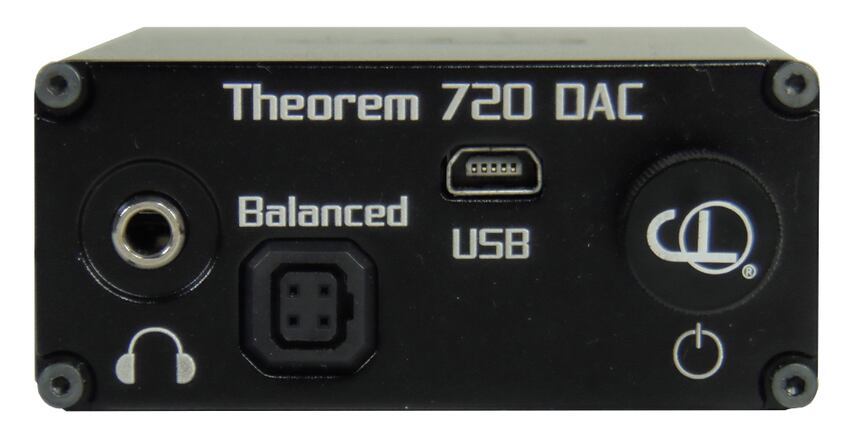
The power supply unit is attached to the back of the device to recharge the battery or to power the device when it is plugged in. A line output Jack of 3.5mm enables you to connect the Theorem 720 DAC to a Hi-Fi stereo system. The three-position toggle switch enables you to choose a low, middle or high gain, depending on the headphones being used.
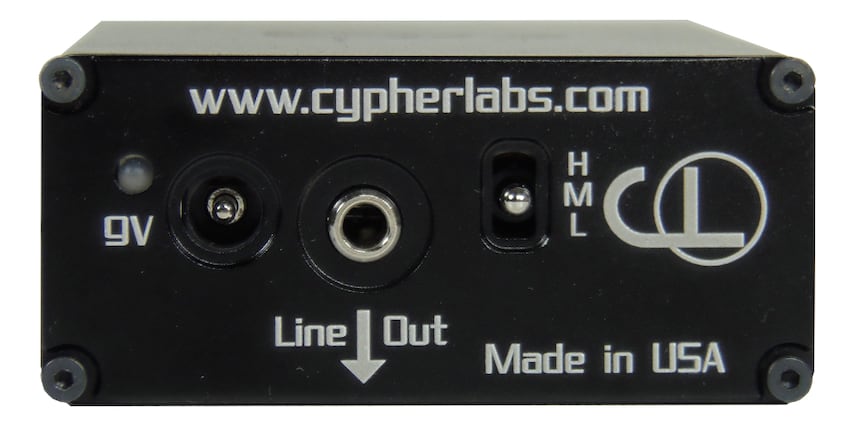
Manufacturing
The Theorem 720 DAC?s unique card is inserted into the black anodised aluminium box. The card is of a very high quality, containing, as well as connectors, switches and potentiometers, a battery with an impressive capacity of 8700mAh under 3.7. All this is firmly fixed using double-sided adhesive tape.
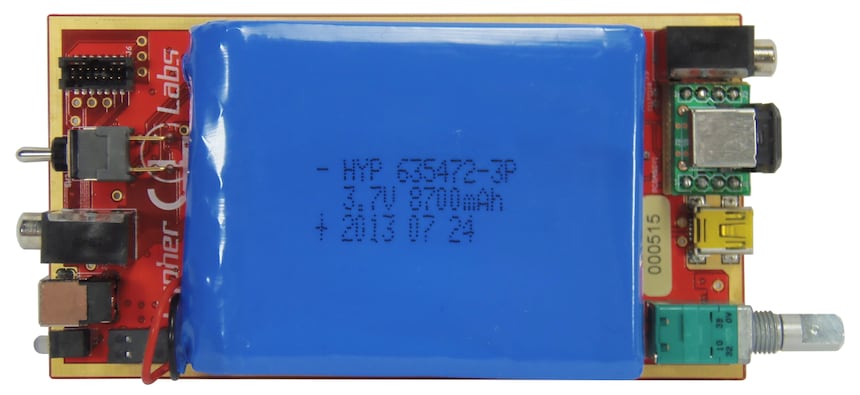
The other side of the circuit houses all the electronic components, fastened together by a bulky belt of four conductive strips. This is attached to the bottom of the box in order to fix it all together. The anodizing process creates an insulating layer of aluminium.
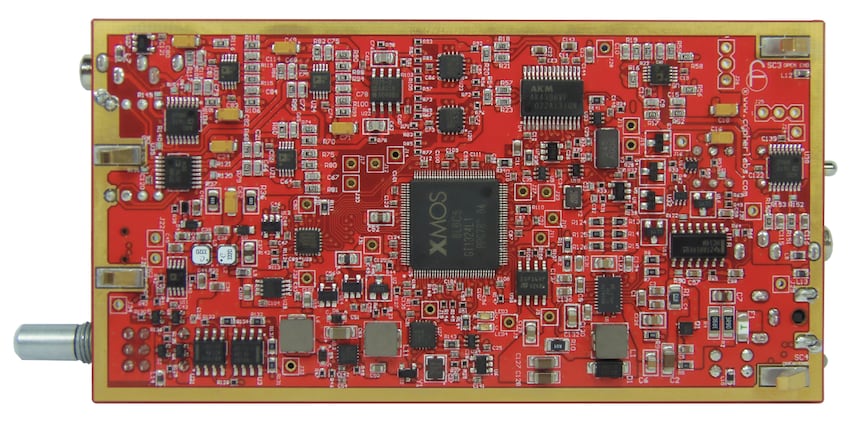
The USB interface is built on a Microchip (SMSC) USB3318 asynchronous circuit that produces the the ?On The Go? (OTG) feature, which enables the device to communicate with certain smartphones.
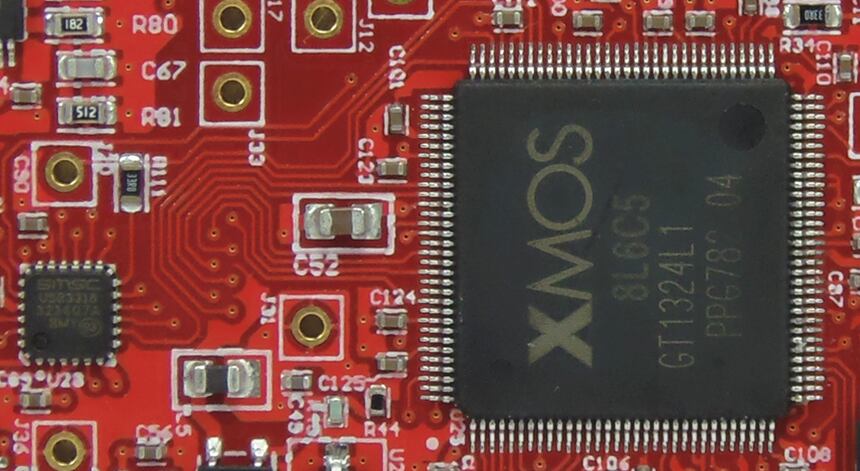
The DAC uses a XMOS XS1?L8A?64?LQ64?C5 processor, which controls the extraction of the 12S bus. This is then used by the analogue digital conversion chip, in this case an Asahi Kasei AK4396 (24-bits at 192kHz), to rebuild the audio analogue signals that are available in the differential mode from the chip output.
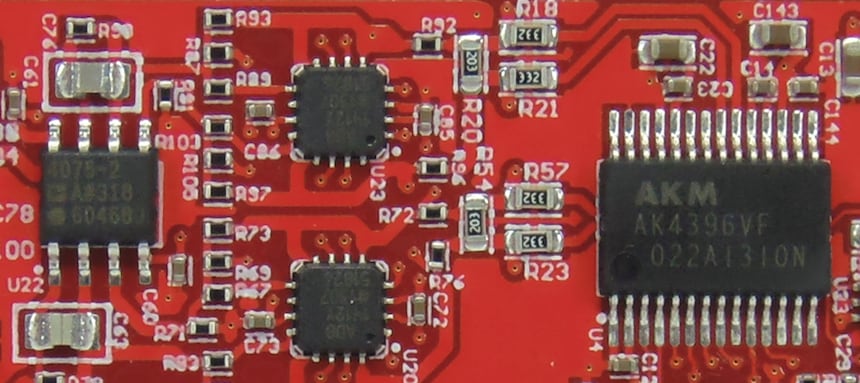
The filtration of signals is built around the Analog Devices ADA4075-2 very low noise double operational amplifier.
Then comes the amplifier for headphones. This is built around the four ADA4897 operational amplifiers, in order to create two bridge circuits per channel. One of the amplifiers maintains the phase signals, whilst the other reverses this phase.
Each ADA4997 can deliver a current of 70mA. This is powered by symmetric voltages of + or ? 5V, the latter being obtained from an Analog Devices ADP1612 voltage convertor (reference U11, on the bottom right).
The Analog Devices ADG1612 analog switches are used to change the gain of the headphone amp, by activating more or less resistance.
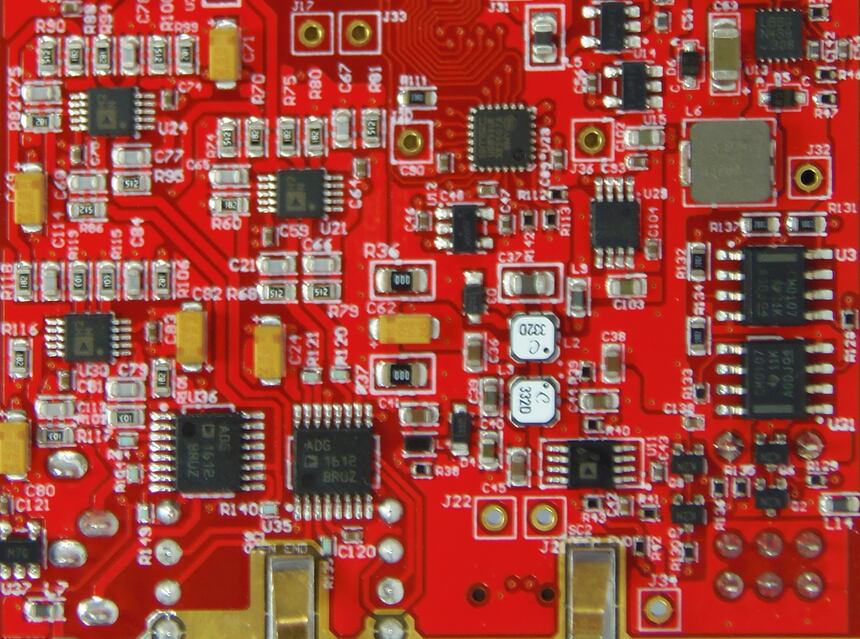
Listening
From the first seconds of listening to Introduzione al Dixit RV 635: Sternite, Angeli from the album Dixit Dominus by the Concerto Italiano, directed by Rinaldo Alessandrini, we were hooked to the perfect sound restitution of the Cypher Labs Theorem 720 DAC.
It is a dream sound restitution: precise, dynamic, filling out and exploring every possible sound. It is well suited for Vivaldi conducted by Rinaldo Alessandrini, as the strings are intense and lively, making us appreciate this original interpretation.
We listened to the Introduzione al Dixit RV 635, and the whole of Dixit Dominus RV594, which comes next on the album, at a very pleasant volume. Ah, the strings at the introduction to Dominus a dextris tuis (track 23) are simply gorgeous!
You experience the same intense musical pleasure when listening to the album Racine Carrée from the infamous Stromae. The tracks are linked together by their musical characteristics, which are fully revealed and highlighted by the Theorem 720 DAC?s analysis capacities. Contrary to what you may believe, the analytical sound restitution does not mean that the sound is cold and impassive - far from it. The DAC creates a delightful sound reproduction that develops emotion. In particular, the Latino ambiences of the track Ave Cesaria are particularly remarkable!
The very striking Roar from Katy Perry?s album Prism is reproduced with punch and vigour, as the singer?s vocals are incredibly clear. Not once are you tempted to turn down the sound.
In conclusion, we are awarding the DAC Cypher Labs Theorem 720 with a Qobuzism to commend its precise, dynamic and well-rounded sound restitution, which conveys all the different emotion of our favourite music. Its well-thought-out electronic design and its compatibility with portable sources is truly impressive.
Theorem 720 on the Cypher Labs website
Reading capabilitites
Cypher Labs Theorem 720 DAC

If you are a manufacturer, importer, distributor or actor in the domain of sound reproduction and you wish to contact us, please do so using the following address: newstech@qobuz.com
If you are passionate about our Hi-Fi Guide and you wish to contact us, please do so using the following address: rubriquehifi@qobuz.com

